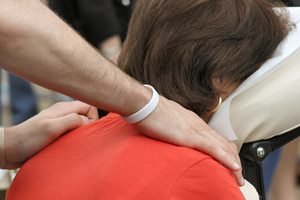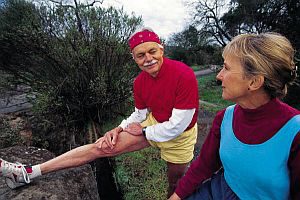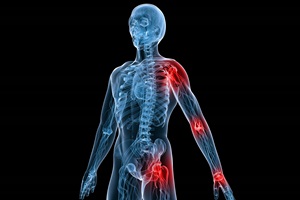Top 7 Exercises for More Core Muscle Strength

Sitting for long periods of time has a detrimental effect on our “core” muscles. These are the muscles responsible for keeping us upright and allowing us to twist and bend without falling over. It is important to keep these muscles strengthened in order to avoid chronic low back pain and injuries that may result from lifting heavy objects. The stronger your core, the less prone you are to injury. The following seven core muscle exercises are particularly good for strengthening these muscles. Hold each pose (except for the bicycle ab crunch) for at least 10 seconds and repeat 5 to 10 times.
Superman – Lie face-down on the floor with your arms straight out in front of you and your knees together. Simultaneously lift your arms, upper chest and legs off the floor, balancing on your pelvis.
Bridge – Lie on your back with your knees bent and your feet flat on the floor, as close to your buttocks as possible, with your arms close to your sides. Contracting your abdominal muscles, raise your hips toward the ceiling until a straight line is formed between your knees and neck.
Modified V-sit – Start while seated on the floor with your knees bent in front of you and feet flat on the floor. Lean back slightly on your hands and lift your feet off the floor so you are balanced on your buttocks (making a sort of square root symbol), then hold your arms straight out in front of you, on each side of your knees. Once you have gained some experience, you can work up to straightening your legs so you form a “V.”
Plank – Lie on your stomach with your elbows close to your sides and directly under the shoulders, with palms down and hands facing forward. Keeping your legs straight, lift your entire torso and hips off the floor, balancing on your toes and forearms. Your head should be parallel with your spine, looking at the floor.
Side plank – Start by lying on your side, resting on your forearm and on the outside of your foot, with one foot on the other. Placing your elbow directly beneath your shoulder, align your head with your spine while keeping your hips and knee in contact with the floor. Lift your hips and knees off the floor, keeping your upper arm flat against your side and balancing on your forearm and foot. For a greater challenge, raise up onto your hand and stretch your upper arm out, forming a leaning “T.”
Bird dog – On your hands and knees, place your hands directly below your shoulders, while aligning your head and neck with your back. Stretch your left arm out in front of you, parallel to the floor, while extending your right leg straight out behind you, being sure not to arch your lower back. Repeat with opposite arm and leg.
Bicycle ab crunch – Lie flat on your back with your hands behind your head. Curl your body forward, like performing a crunch, bringing your left knee towards your right elbow while extending your right leg out, lifted slightly off the floor. Keeping your shoulders off the floor, switch your crunch to right knee and left elbow, while extending the left leg. Keep alternating from left to right for about a minute.

 What do you think about when you hear the word “massage”? If you’re like many people, you associate massage with a day of pampering at an exclusive resort spa in the mountains or at the beach. But if that’s the first picture that comes to mind, you might be missing something very, very important. That something is the therapeutic value of massage—the ways that massage can actually improve your health and well-being.
What do you think about when you hear the word “massage”? If you’re like many people, you associate massage with a day of pampering at an exclusive resort spa in the mountains or at the beach. But if that’s the first picture that comes to mind, you might be missing something very, very important. That something is the therapeutic value of massage—the ways that massage can actually improve your health and well-being. It’s no secret that some jobs are just more physically demanding and more dangerous than others. Some of the most challenging ones are obvious—combat roles in the military, fire and rescue, heavy construction and deep sea fishing are just a few that come to mind. However, when it comes to non-fatal musculoskeletal injuries, the statistics tell a very different story about occupational health and safety and about who’s most likely to get hurt on the job.
It’s no secret that some jobs are just more physically demanding and more dangerous than others. Some of the most challenging ones are obvious—combat roles in the military, fire and rescue, heavy construction and deep sea fishing are just a few that come to mind. However, when it comes to non-fatal musculoskeletal injuries, the statistics tell a very different story about occupational health and safety and about who’s most likely to get hurt on the job. Studies have shown that one of the best ways to stick to your fitness regime is to have a reliable fitness partner. Being a fitness buddy means that someone else is counting on you to make them accountable for their workout, keep them inspired and ensure that they are not alone in their quest for fitness. To be a great fitness buddy you just need to keep a few basic guidelines in mind:
Studies have shown that one of the best ways to stick to your fitness regime is to have a reliable fitness partner. Being a fitness buddy means that someone else is counting on you to make them accountable for their workout, keep them inspired and ensure that they are not alone in their quest for fitness. To be a great fitness buddy you just need to keep a few basic guidelines in mind:



